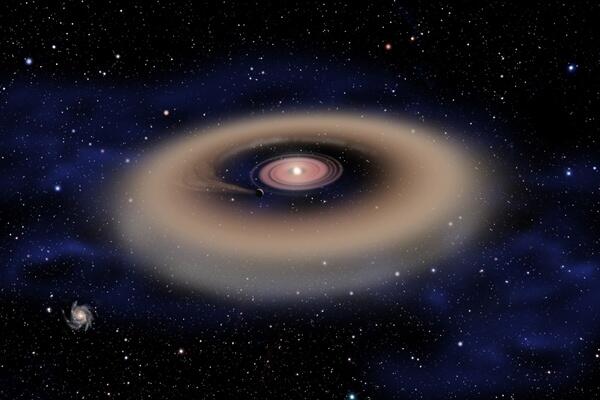According to the NASA Exoplanet Archive, astronomers have found 3,498 confirmed exoplanets as of June 29, 2017. Of those planets, 679 have measured masses, and 281 have masses greater than 300 times that of Earth (Jupiter’s mass is nearly 318 times that of Earth). As more planets circling other stars are discovered, astronomers are now hoping to use the increased statistics to understand how those planets form in the first place. And recent work has now found evidence for at least two formation mechanisms behind the growth of giant planets in extrasolar systems.
The work, published July 3 in Astronomy & Astrophysics, focuses on data gathered by a team at the Instituto de Astrofísica e Ciências do Espaço (IA) in Porto, Portugal. Based on information about both the exoplanets that have been discovered and the stars around which they circle, the team at IA found evidence for two types of giant planets, each with its own formation scenario.
“Our team, using public exoplanet data, obtained … interesting observational evidence that giant planets such as Jupiter and its larger mass cousins, several thousand times more massive than the Earth (of which we do not have an example in the Solar System) form in different environments, and make two distinct populations,” said Vardan Adibekyan of IA and Universidade do Porto, a co-author on the paper, in a press release.
These populations are divided by planetary mass: The first population is “lower-mass” giant planets less than four times the mass of Jupiter; the second is giant planets ranging from four to 20 Jupiter masses.
The team found that the lower-mass gas giants form around metal-rich stars via a process called core-accretion, during which a rocky or icy core is formed first, which then attracts gas from the surrounding protoplanetary disk to form a gas giant. (In astronomers’ parlance, any element heavier than helium is considered a metal; our Sun is considered a relatively metal-rich star.)
Alternatively, higher-mass gas giants seem to form via instabilities that occur in the protoplanetary disk, without first developing a core. Instead, these instabilities cause portions of the disk to condense into giant planets. These planets are also more likely to form around more massive but metal-poor stars.
“The result now published suggests that both mechanisms may be at play, the first forming the lower mass planets, and the other one responsible for the formation of the higher mass ones,” said Nuno Cardoso Santos of IA and Faculdade de Ciências da Universidade do Porto, who led the research.
The fact that more than one formation scenario exists affects the type of planets we expect to see, as well as where we expect to see them. Furthermore, determining how planets form and the environmental factors that play a role during this process will help astronomers and planetary scientists better understand how our own solar system formed. Both current and future missions, including GAIA, TESS, and JWST, will continue to provide constraints and insight on planetary formation throughout the galaxy.
Source: http://bit.ly/2uwmc9x











